
The Dungeon Master's Guide is a book of rules for the fantasy role-playing game Dungeons & Dragons. The Dungeon Master's Guide contains rules concerning the arbitration and administration of a game, and is intended for use by the game's Dungeon Master.

Deities & Demigods, alternatively known as Legends & Lore, is a reference book for the Dungeons & Dragons fantasy role-playing game (D&D). The book provides descriptions and game statistics of gods and legendary creatures from various sources in mythology and fiction, and allows dungeon masters to incorporate aspects of religions and mythos into their D&D campaigns.
Erol Otus is an American artist and game designer, who contributed art to the fantasy role-playing game (RPG) genre, especially early in the Dungeons & Dragons franchise. He created art for the award winning Star Control II as well as providing the voice for one of the character races, the Chmmr, in the same game.
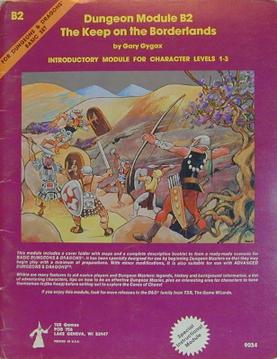
The Keep on the Borderlands is a Dungeons & Dragons adventure module by Gary Gygax, first printed in December 1979. In it, player characters are based at a keep and investigate a nearby series of caves that are filled with a variety of monsters. It was designed to be used with the Dungeons & Dragons Basic Set, and was included in the 1979–1982 editions of the Basic Set. It was designed for people new to Dungeons & Dragons.
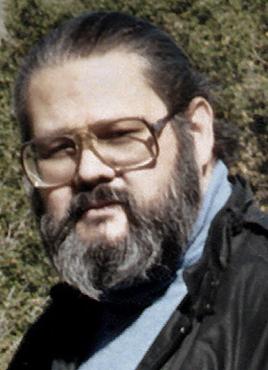
David Allen Hargrave, known as The Dream Weaver, was a prolific and sometimes controversial American game designer and writer of fantasy and science fiction role-playing games (RPGs). Hargrave's most notable written works were based upon his own mythical world of Arduin.

Palace of the Silver Princess is an adventure module for the Dungeons & DragonsBasic Set. It was recalled on the same day it was released, then rewritten and re-released some months later. The original version, with an orange cover, was written in 1980 by Jean Wells. When the orange version was recalled, the module was rewritten by Tom Moldvay and released with a green cover. Writing credit on the second version was given to both Moldvay and Wells, although there was very little of Wells' original content in Moldvay's version.

Descent Into the Depths of the Earth is an adventure module for the Dungeons & Dragons (D&D) fantasy roleplaying game coded D1–2. It was written by Gary Gygax, and combines two previously published modules from 1978, the original Descent into the Depths of the Earth and Shrine of the Kuo-Toa. A sequel to the first two modules, Vault of the Drow, was also published in 1978. All of these D-series modules were produced for use with the 1st edition Advanced Dungeons & Dragons (AD&D) rules.

Judges Guild is a game publisher that has been active since 1976. The company created and sold many role-playing game supplements, periodicals and related materials. During the late 1970s and early 1980s the company was one of the leading publishers of Dungeons & Dragons related materials. Its flagship product, City State of the Invincible Overlord, was the first published RPG supplement to feature a fully developed city environment. The supplement was followed closely by numerous ancillary cities, maps, and other materials published by Judges Guild.

The Hidden Shrine of Tamoachan is an adventure module for the Dungeons & Dragons (D&D) fantasy role-playing game, set in the World of Greyhawk campaign setting for use with the 1st edition Advanced Dungeons & Dragons rules. It is the first in the C-series of modules, a set of unrelated adventures originally designed for competitive play, with the C representing the first letter in the word competition. It is the first D&D adventure to use boxed, "read aloud" text.
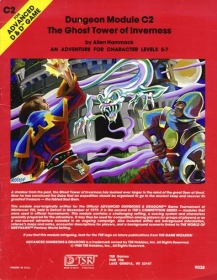
The Ghost Tower of Inverness is an adventure module for the Dungeons & Dragons fantasy roleplaying game, set in the game's World of Greyhawk campaign setting. The module's title refers to an ancient magical tower located in the southern Abbor-Alz Hills. The "C" in the module code represents the first letter in the word "competition," the name of C1 – C6 module series.
James Paul Roslof was an American artist who produced cover art and interior illustrations of fantasy role-playing games published by TSR, Inc. during the "golden age" of Dungeons & Dragons. As Art Director at TSR in the early 1980s, he was also responsible for hiring many of the young artists who would go on to careers in the fantasy role-playing industry.
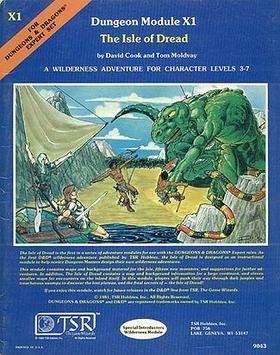
The Isle of Dread is an adventure for the Dungeons & Dragons role-playing game. The adventure, module code X1, was originally published in 1981. Written by David "Zeb" Cook and Tom Moldvay, it is among the most widely circulated of all Dungeons & Dragons adventures due to its inclusion as part of the D&D Expert Set. In the adventure, the player characters arrive on the Isle of Dread seeking a lost treasure, and there encounter new nonhuman races.
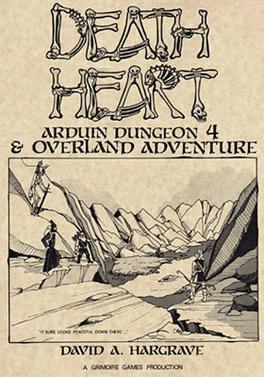
Death Heart was a standalone short story and gaming module written in 1980 by David A. Hargrave and published by Grimoire Games. It was the last of Hargrave's officially released dungeon modules before his death in 1988 and was an extension of his Arduin Multiverse, which at the time of Death Heart's publication was known as The Arduin Trilogy.
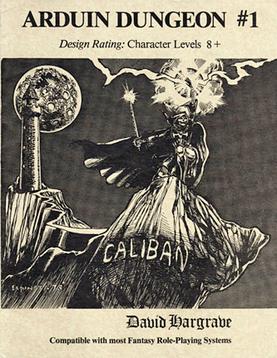
Caliban was a standalone short story and gaming module written in 1979 by David A. Hargrave and published by Grimoire Games. It was based upon Hargrave's gaming system known as Arduin. It is the first of only four standalone "dungeon" books created by Hargrave as an extension of his Arduin Multiverse, which at the time of Caliban's publication was known as The Arduin Trilogy.

The Howling Tower was a standalone short story and gaming module written in 1979 by David A. Hargrave and published by Grimoire Games. It was based upon Hargrave's gaming system known as Arduin. It is the second of only four standalone "dungeon" books created by Hargrave as an extension of his Arduin Multiverse, which at the time of The Howling Tower's publication was known as The Arduin Trilogy.
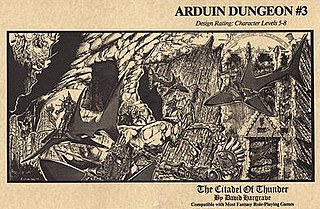
The Citadel of Thunder was a standalone short story and gaming module written in 1979 by David A. Hargrave and published by Grimoire Games. It was based upon Hargrave's gaming system known as Arduin. It is the third of only four standalone "dungeon" books created by Hargrave as an extension of his Arduin Multiverse, which at the time of The Howling Tower's publication was known as The Arduin Trilogy.

Dungeon Crawl Classics Role Playing Game is a role-playing game published by Goodman Games using the Open Game License (OGL) and System Reference Document (SRD) version 3.5 to provide legal compatibility with the revised third edition of Dungeons & Dragons.

The original Dungeons & Dragons boxed set by Gary Gygax and Dave Arneson was published by TSR, Inc. in 1974. It included the original edition of the Dungeons & Dragons fantasy role-playing game. Its product designation was TSR 2002.

The Dungeons & Dragons Basic Set is a set of rulebooks for the Dungeons & Dragons (D&D) fantasy role-playing game. First published in 1977, it saw a handful of revisions and reprintings. The first edition was written by J. Eric Holmes based on Gary Gygax and Dave Arneson's original work. Later editions were edited by Tom Moldvay, Frank Mentzer, Troy Denning, and Doug Stewart.
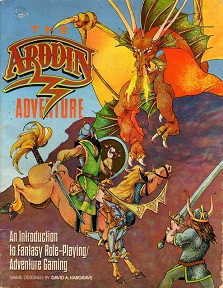
The Arduin Adventure is a 1981 role-playing game published by Grimoire Games. Although previous publications by Grimoire used the rules from the fantasy role-playing game Dungeons & Dragons, The Arduin Adventure attempted to create a new rules system.



















